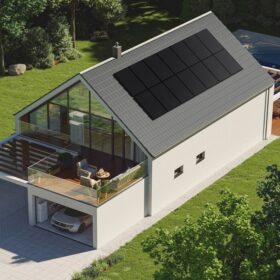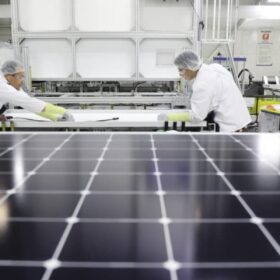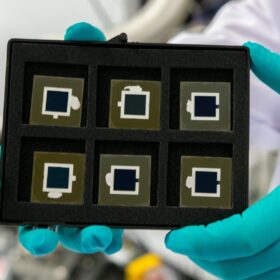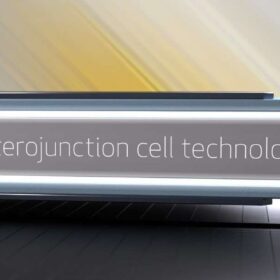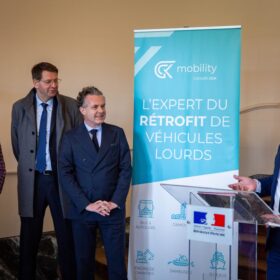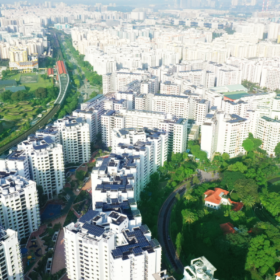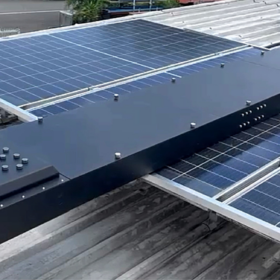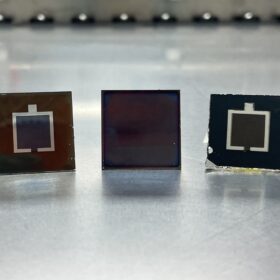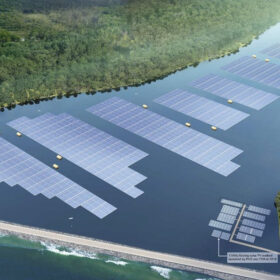Maxeon unveils TOPCon solar module series for rooftop PV
Maxeon said its new Sunpower Performance 7 panel series features a power conversion efficiency of up to 22.7% and an operating temperature coefficient of -0.29% C.
Maxeon sues Canadian Solar for alleged TOPCon patent infringement
Maxeon has filed a lawsuit against Canadian Solar in a US court, claiming patent infringement on an unspecified TOPCon solar cell technology.
Perovskite-perovskite-silicon tandem solar cell achieves record-breaking efficiency of 27.1%
Researchers in Singapore have built a triple junction tandem solar cell with an ultrawide-bandgap perovskite absorber integrating cyanate (OCN) ions. The cell surpassed the power conversion efficiencies previously reported for all other perovskite-based triple-junction tandems, as well as single-junction perovskite and silicon solar cells.
REC launches 430 W heterojunction solar module with 22.2% efficiency
REC has developed a new series of residential heterojunction solar panels with efficiencies ranging from 20.6% to 22.2% and an operating temperature coefficient of -0.24% per degree Celsius.
The Hydrogen Stream: First hydrogen coach ready for mass-production
GCK Mobility has secured French government approval for the first homologation of a hydrogen-retrofitted coach for series production, while Forvia and Air Liquide have agreed with FAW Jiefang to equip heavy-duty trucks with liquid hydrogen storage systems in China.
EDP Renewables wins Singapore’s largest public solar tender
EDP Renewables has won Phase 8 of Singapore’s SolarNova program, the country’s largest public solar tender to date. The developer will install up to 200 MWp of rooftop PV capacity.
Inverted perovskite solar cell with antimony-doped tin oxides achieves 25.7% efficiency
Researchers in Singapore have built an inverted perovskite PV device with a p-type antimony-doped tin oxides (ATOx) interlayer that reportedly reduces the efficiency disparity between small and large-area perovskite cells. According to their findings, ATOx may easily replace commonly used nickel oxides (NiOx) as a hole transport material.
Singaporean startup unveils high intensity illumination tech that ‘rejuvenates’ solar panels
NTU Singapore researchers and startup EtaVolt presented a high intensity illumination device that can reportedly “patch up” the holes caused by light and heat in silicon solar cells. The new technique is claimed to reduce solar module degradation by up to 5 years and to be usable for around 90% of the solar modules available in the market.
Scientists achieve 29.9% efficiency for four-junction perovskite-CSI tandem solar cell
Achieved by scientists led by the National University of Singapore, the result is the highest efficiency ever recorded for a perovskite-CIS tandem solar cell at the research level to date. The researchers used methyldiammonium diiodide (MDADI) to reduce open-circuit voltage losses in the top perovskite cell.
The ‘next big thing’
The PV industry in Southeast Asia has come a long way since guest author Ragna Schmidt-Haupt, partner at Everoze, reported on solar financing innovation in the region more than a decade ago. In this article, she outlines five factors for success, the newest of which has the potential to become a game changer, and not only in Southeast Asia.
